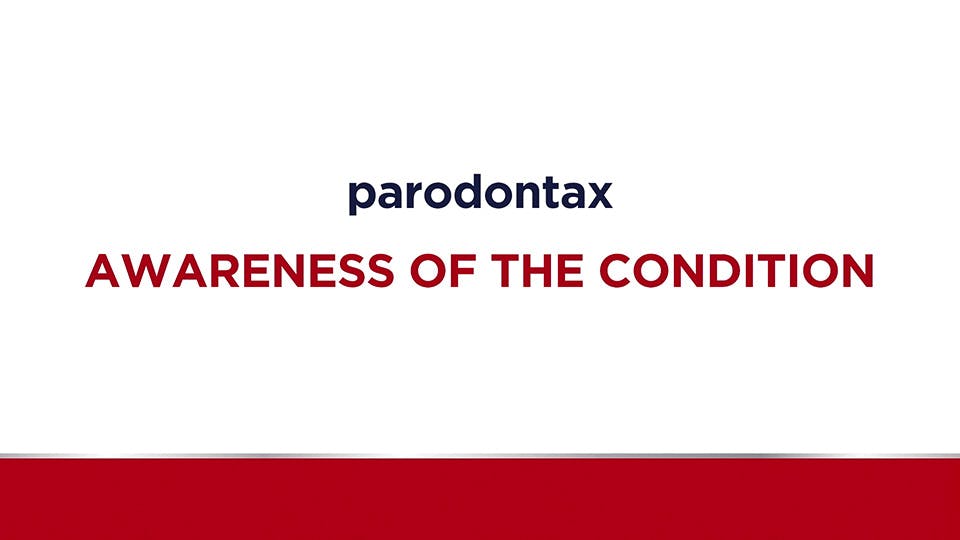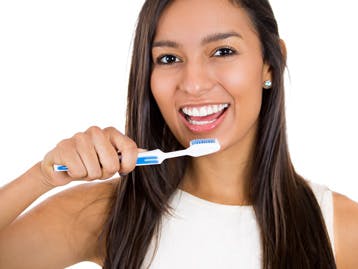Most tooth loss is preventable. Learn why it happens and how to stop it.
As a child, losing milk teeth feels like a rite of passage on the journey to adulthood – but as a grown up, it can be distressing. Not only can tooth loss have negative consequences for your oral and everyday health, it may also affect your self-confidence – changing the way you eat, speak and smile.
There are a number of reasons why you might suffer from tooth loss as an adult, but the leading cause are gum problems.
How gum problems can lead to tooth loss
Healthy gums are pink, firm to the touch, and help to keep your teeth securely in place in your mouth. But if they are affected by a problem, your gums may struggle to do their job.
The main cause of gum problems is plaque (the sticky layer of bacteria that constantly forms on our teeth). If not removed by twice-daily brushing and flossing, this bacteria can irritate the gums, causing them to become red, tender and swollen. It may also cause bleeding gums when you brush and floss. These are signs of the first stage of gum problem, called gingivitis.
If left unattended, gingivitis can develop into the irreversible second stage (periodontitis)^, which can cause gums to pull back from the teeth. Unfortunately, periodontitis can also eventually lead to the loss of tissue and bone that supports your teeth, so they may begin feel loose and start moving around. Eventually, they may fall out.
Learn more about the stages of gum problems.
Other causes of tooth loss in adults
While gum problems may be the most common cause of tooth loss, there are other ways that it can happen, including:
- Loss of bone density (osteoporosis). As we get older, it’s common for our bone density to decrease – and the jawbone is no exception. Since the jawbone is the ‘anchor’ for our teeth, loss of bone density means the jaw may no longer be able to support the teeth properly. This can lead to teeth becoming loose and falling out.
- Tooth decay. Decay occurs when the sugars from what we eat and drink interact with the plaque on our teeth, producing harmful acids that can attack the tooth enamel. Over time, these acids can completely wear away our enamel, potentially leading to cavities (holes in the teeth) and tooth loss.
- Injury. Some tooth loss may simply be the result of direct damage to the tooth or jaw, causing it to fall out.
Consequences of tooth loss
Tooth loss in adults can be a difficult experience, since it has both functional and aesthetic consequences in your daily life. Here are just a few things that can happen as a result of your teeth falling out:
- may develop crooked teeth. When you have lost a tooth (or teeth), your remaining teeth may move around to take up some of the space, so you could end up with crooked or lopsided teeth. This could affect the way you bite and may even damage your other teeth.
- You can’t eat like you used to. We all have four different types of teeth, and each serve a different function. Our front teeth (incisors and canines) are sharper and are used for cutting into food, while the back teeth (pre-molars and molars) help with crushing, chewing and grinding. They’re all important, so no matter which teeth you lose, you may not be able to eat as effectively. With advanced tooth loss, your diet may become extremely limited.
- You can’t speak like you used to. Believe it or not, losing your teeth can affect the way you speak. That’s because our teeth help us to form and pronounce words and sounds. But while changes in speech patterns may be cute in little ones, they can be embarrassing for adults. Unfortunately, the impact of tooth loss on speech may lead to feeling self-conscious about the way you talk and cause you to avoid socialising with others.
- You don’t smile like you used to. Tooth loss can cause some obvious gaps in your smile, so it’s no wonder that having teeth falling out may cause you to smile less, smile differently or feel the need to cover your mouth. Sadly, when you lose teeth you may also often lose confidence in the way you look. This can lead to low self-esteem, and further withdrawal from social situations.
^Gasner NS, Schure RS. Periodontal Disease. 2023
Learn more about how gum problem can lead to tooth loss in this short video:
How to help prevent tooth loss
If you’re worried you are at risk of losing a tooth, don’t panic. Your dentist can advise you on how to help stop or slow the progression of tooth loss and even replace missing teeth – so the first step is to speak to them about your options.
However, there are some other basic steps you can take straight away after scheduling an appointment with your dentist:
- Start brushing with the right toothpaste. Brushing twice daily with a fluoride toothpaste, such as parodontax Daily Fluoride toothpaste, is essential for your oral health. parodontax Daily Fluoride is specially formulated to help stop bleeding gums by enhancing plaque removal and is proven to be 4X more effective at removing bacteria build-up, the cause of bleeding gums.*
- Track your gum health. Of course your dentist keeps records, but so should you. Taking control of your oral health will help you stay on top of gum problems. Get organised with a diary to note and chart your symptoms (such as red, swollen, bleeding or receding gums). This may help alert you to any increase in symptom frequency or severity, and help to answer your dentist’s questions.
*compared to a regular toothpaste with twice daily brushing. GSK data on file. RH02434, 2015
Good oral hygiene and regular trips to the dentist are the keys to preventing tooth loss caused by gum problems. Be sure to brush twice a day with a toothpaste specially formulated to help stop gum problems.
Unlike a toothache, gum problems are not always painful. In fact, to begin with, you may not even notice you have it at all. Professional dental examinations can help pick up any early signs of gum problems. This is especially important if you smoke, as smoking puts you at higher risk of gum problem^.
^Gasner NS, Schure RS. Periodontal Disease. 2023
ABOUT GUM PROBLEMS
Explore the articles below to learn more about gum problems, as well as how to help combat and prevent it.




